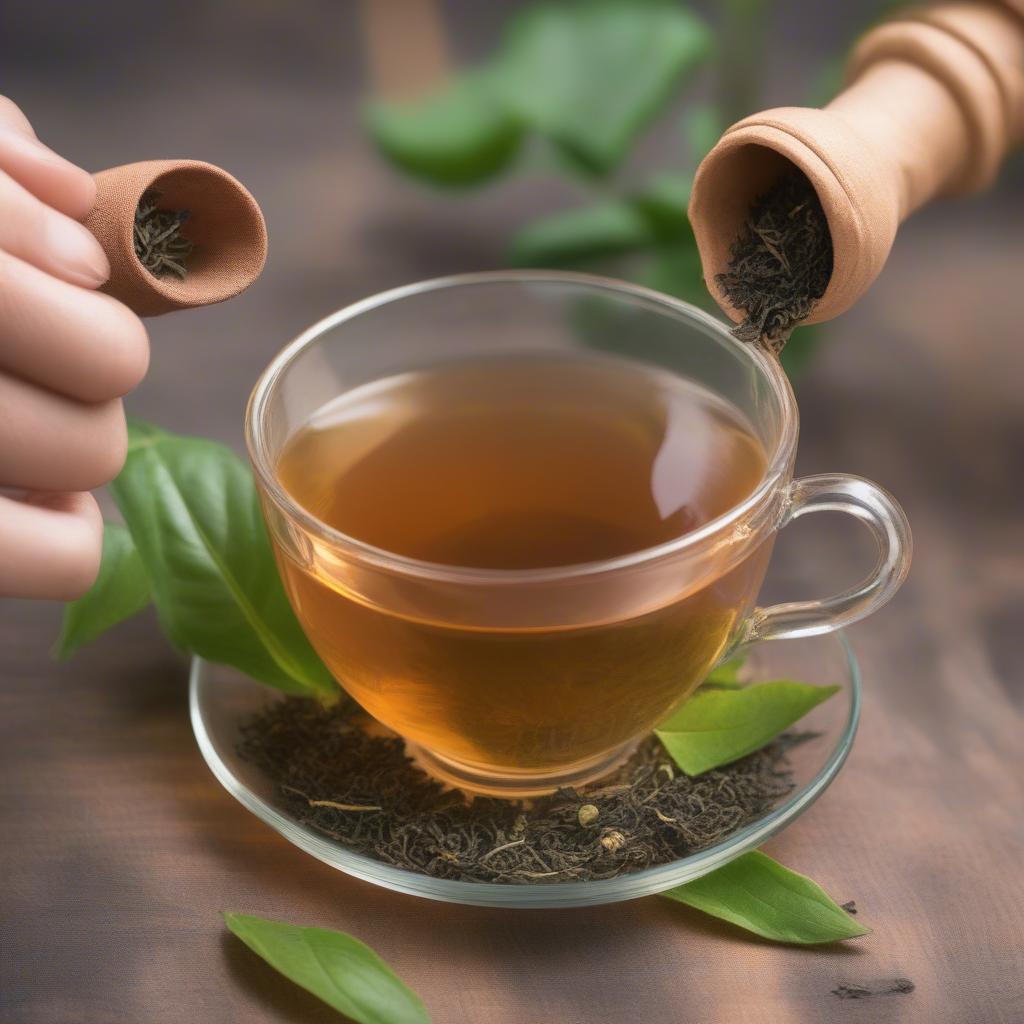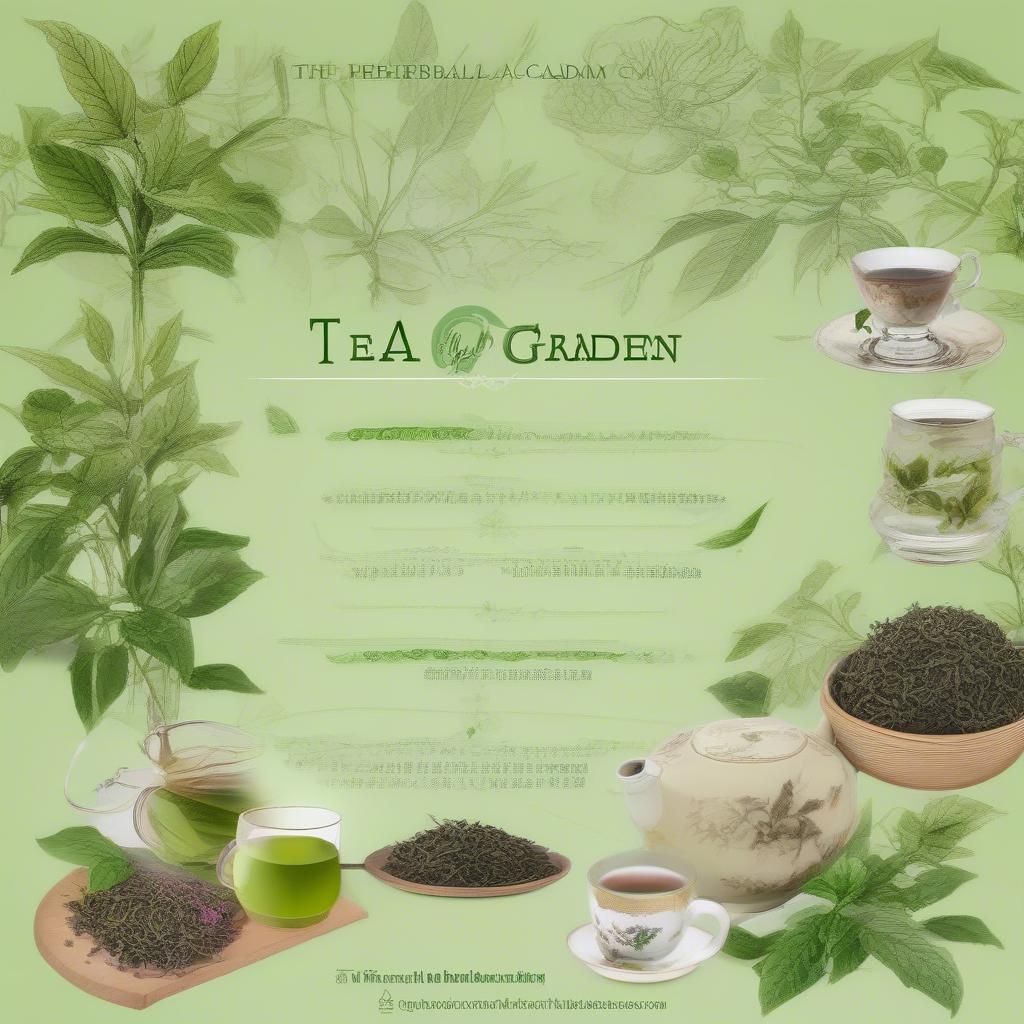
My Tea Garden: A Sanctuary of Herbs and Medicinal Plants
A Summer Morning in the Tea Garden
As the sun rises over the Appalachian mountains, I begin my day in the tea garden. The gentle morning light casts a warm glow on the lush greenery, and the dew-kissed plants stretch their leaves towards the sky. With my favorite mug in hand, I take a leisurely stroll through the garden, snipping a few of my favorite herbs – lemon balm, blue vervain, tulsi, and catnip. I also can’t resist picking some yarrow and echinacea to add to my collection. As I return indoors, I prepare my tea kettle and pour the boiling water over my freshly gathered herbs, steeping them for 10 minutes before savoring the delightful flavors.
From Kitchen Garden to Tea Garden
Over the years, my garden has transformed from a traditional kitchen garden filled with vegetables to a vibrant tea garden. While many people associate tea gardens with Camellia sinensis, my garden is a haven for a diverse array of herbs and medicinal plants. I’ve always grown herbs alongside my vegetables, as they not only repel pests but also enhance the growth and flavor of my vegetables. As time passed, I found myself adding more herbs and fewer vegetables, until I finally decided to dedicate my kitchen garden to my beloved herbs, with a few vegetables and pollinator-friendly native flowers scattered throughout.
Assortment of Herbs in My Tea Garden
My tea garden is home to a wide variety of herbs, including:
- Lemon balm (Melissa officinalis)
- Rosemary (Rosmarinus officinalis)
- Rose (Rosa spp.)
- Nettle (Urtica dioica)
- Tulsi (Ocimum tenuiflorum)
- Echinacea (Echinacea spp.)
- Yarrow (Achillea millefolium)
- Catnip (Nepeta cataria)
- Blue vervain (Verbena hastata)
- Chamomile (Matricaria chamomilla)
- Bachelor’s button (Centaurea cyanus)
- Wild bergamot or bee balm (Monarda fistulosa)
- Vick’s Plant (Plectranthus tomentosa)
- Peppermint (Mentha piperita)
- Basil (Ocimum basilicum)
- Dill (Anethum graveolens)
- Toothache Plant (Acmella oleracea)
- Red clover (Trifolium pratense)
- Pleurisy root (Asclepias tuberosa)
- St. John’s Wort (Hypericum perforatum)
- Ashwagandha (Withania somnifera)
- Sorrel (Rumex acetosa)
- Clary sage (Salvia sclarea)
- Thyme (Thymus vulgaris)
- Borage (Borago officinalis)
- Anise hyssop (Agastache foeniculum)
- Lemongrass (Cymbopogon citratus)
- Lemon verbena (Aloysia citrodora)
- Calendula (Calendula officinalis)
- Nasturtium (Tropaeolum majus)
- Chrysanthemum (Chrysanthemum morifolium)
- Mugwort (Artemisia vulgaris)
- Skullcap (Scutellaria lateriflora)
- Chives (Allium schoenoprasum)
- Blue sage (Salvia azurea)
Favorite Herbs
While it’s difficult to narrow down my favorites, if I had to choose three herbs that stand out to me, they would be:
- Lemon balm (Melissa officinalis)
- Nettle (Urtica dioica)
- Tulsi (Ocimum tenuiflorum)
Lemon balm is an herb that I use extensively for its soothing and sweet aroma, while also offering a range of health benefits. Nettle is another herb that I frequently use, as it has a light, almost grass-like flavor and is rich in vitamins and minerals. Tulsi, with its floral aroma and adaptogenic properties, is a favorite that I often combine with other herbs to create well-balanced tea blends.
Preparing Teas and Infusions
I use my fresh herbs to prepare both teas and longer-steeped infusions. There are some differences in the preparation process for each. A typical tea uses less plant material and is steeped for a shorter period of time, usually 5-10 minutes. Teas are usually made in small batches or as a single cup at a time. On the other hand, long-steeped infusions use more plant material and are made in larger batches. They often call for 1-3 tablespoons of dried herb per cup of water and take several hours or even overnight to infuse.
A Little-Known Tea Ingredient
One non-traditional tea ingredient that I love using is radish greens! They add a bright and fresh flavor to my teas, and are packed with vitamins like A, C, and B6, as well as minerals like magnesium, calcium, and iron.
The Benefits of Herbal Teas
Herbal teas can be a great way to unwind, relax, and support overall health. Whether you’re brewing a soothing tea in the evening or using a powdered tea mix, the calming effects can be beneficial in promoting sleep, supporting digestion, and providing essential vitamins and minerals. However, it’s essential to note that herbal teas should not be used as a substitute for a healthy lifestyle, including a balanced diet and regular exercise.
A Problem of Abundance – What to Do with Excess Tea Herbs?
Herbs are best harvested regularly to keep them happy and promote growth. This often means cutting back the herbs every other week or so. To preserve the excess herbs for future use, I dry them. Drying herbs is a simple process that requires a bit of patience but allows me to enjoy my herbal teas year-round.
Tips for Harvesting and Drying Herbs
Here are a few helpful tips for harvesting and drying herbs:
- Harvest herbs in the morning, after the dew has evaporated but before the sun and heat hit the plants.
- Use clean shears to prevent spreading diseases.
- Brush off and remove any organic material like bugs and dirt.
- Dry herbs in small bundles using natural twine, allowing for air to circulate evenly.
- Alternatively, lay herbs flat on mesh screens to dry.
- Drying can take a week or longer, depending on the herb.
- Avoid direct sunlight when drying and storing herbs, as it can cause them to lose their flavor.
Conclusion
Growing and harvesting my own herbs has been a rewarding experience, allowing me to create herbal teas that nourish both my body and soul. Whether you’re starting your own tea garden or experimenting with different herbal blends, I encourage you to explore the world of herbal teas and discover the countless benefits they have to offer.
References
Carpenter, R. (2018, October 19). Herbal tea or herbal infusion – What’s the difference?. Herbal Academy.
Cohen, M. M. (2014). Tulsi – Ocimum sanctum – A herb for all reasons. Journal of Ayurveda and Integrative Medicine, 5(4), 251-259.
FoodData Central. (2022, October 30). Fdc.nal.usda.gov.
Iannotti, M. (2022, March 11). Companion planting flowers and herbs in the vegetable garden. The Spruce.
Kuhn, M. A., Winston, D. (2008). Winston & Kuhn’s herbal therapy & supplements: A scientific & traditional approach. Lippincott Williams & Wilkins.
Nettle leaf Health benefits, nutrition facts, and how to prepare it. (n.d.). WebMD.
Nettle leaf, North American. (n.d.). Mountain Rose Herbs.
Riotte, L. (1998). Carrots love tomatoes: Secrets of companion planting for successful gardening. Storey Pub. What herbs are mentioned in the tea garden?
What herbs are mentioned in the tea garden?
*i. Lemon balm (Melissa officinalis)
ii. Rosemary (Rosmarinus officinalis)
iii. Rose (Rosa spp.)
iv. Nettle (Urtica dioica)
v. Tulsi (Ocimum tenuiflorum)
vi. Echinacea (Echinacea spp.)
vii. Yarrow (Achillea millefolium)
viii. Catnip (Nepeta cataria)
ix. Blue vervain (Verbena hastata)
x. Chamomile (Matricaria chamomilla)
xi. Bachelor’s button (Centaurea cyanus)
xii. Wild bergamot or bee balm (Monarda fistulosa)
xiii. Vick’s Plant (Plectranthus tomentosa)
xiv. Peppermint (Mentha piperita)
xv. Basil (Ocimum basilicum)
xvi. Dill (Anethum graveolens)
xvii. Toothache Plant (Acmella oleracea)
xviii. Red clover (Trifolium pratense)
xix. Pleurisy root (Asclepias tuberosa)
xx. St. John’s Wort (Hypericum perforatum)
xxi. Ashwagandha (Withania somnifera)
xxii. Sorrel (Rumex acetosa)
xxiii. Clary sage (Salvia sclarea)
xxiv. Thyme (Thymus vulgaris)
xxv. Borage (Borago officinalis)
xxvi. Anise hyssop (Agastache foeniculum)
xxvii. Lemongrass (Cymbopogon citratus)
xxviii. Lemon verbena (Aloysia citrodora)
xxix. Calendula (Calendula officinalis)
xxx. Nasturtium (Tropaeolum majus)
xxxi. Chrysanthemum (Chrysanthemum morifolium)
xxxii. Mugwort (Artemisia vulgaris)
xxxiii. Skullcap (Scutellaria lateriflora)
xxxiv. Chives (Allium schoenoprasum)
xxxv. Blue sage (Salvia azurea)*
What are the steps to harvesting and drying herbs?
*i. Harvest herbs in the morning after dew has evaporated but before sun and heat.
ii. Use clean shears to prevent disease spread.
iii. Brush off bugs and dirt.
iv. Dry in small bundles with twine or on mesh screens.
v. Avoid direct sunlight to retain flavor.*
What are three favorite herbs from the tea garden?
*i. Lemon balm (Melissa officinalis)
ii. Nettle (Urtica dioica)
iii. Tulsi (Ocimum tenuiflorum)*
How do you make a tea from herbs?
*i. Use less plant material and steep for 5-10 minutes. Typically brewed in small batches or single cups.*
How do you make an infusion from herbs?
*i. Use more plant material in larger batches. Steep 1-3 tablespoons dried herb per cup of water for 1-3 hours or overnight.*
What are the benefits of herbal teas?
*i. Promotes sleep, supports digestion, and provides vitamins and minerals but should not replace a healthy lifestyle.*
Why are herbs best harvested regularly?
*i. To keep herbs healthy and promote growth, typically every other week.*
What is a little-known tea ingredient used in the garden?
*i. Radish greens, which add bright, fresh flavor and provide vitamins A, C, B6, and minerals like magnesium, calcium, and iron.*
What was the original purpose of the garden?
*i. It started as a traditional kitchen garden with vegetables before transitioning into a tea garden.*
How has the garden evolved over the years?
*i. The garden shifted focus from vegetables to a vast variety of herbs and medicinal plants, with a few vegetables and pollinator-friendly native flowers as exceptions.*















